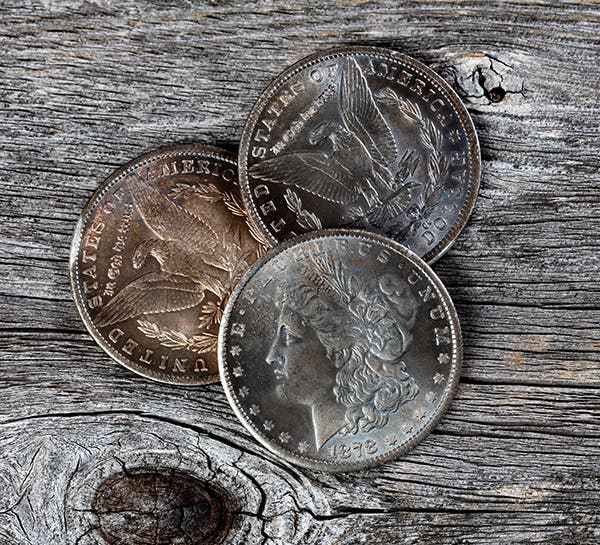Item of the Week: 1811 Half Cent
As a group, half cents are better than large cents in terms of being scarce. Within that group, it is hard to stand out, and we see that with the…
As a group, half cents are better than large cents in terms of being scarce. Within that group, it is hard to stand out, and we see that with the 1811 half cent. It does not really stand out as an especially scarce half cent. In almost any other denomination, it would be a different story, as the 1811 half cent is a tough date that is simply lost in a group of other very tough dates.
By 1811, the half cent had recently had a design change to the John Reich Classic Head design. While the design was changed in 1809, nothing really had changed when it came to half cents as they were still very much the second priority at the Mint when it came to copper coin production.
The basic problem was that there was not a reliable copper supply. Both the half cent and large cent were large in size and required a significant amount of copper to produce. That is fine if you have copper. If, however, the copper generally has to come from a country with which you have just fought a war and where there are still lingering problems, then that supply can become a bit suspect.
There were other problems as well. The capacity of the Mint at the time was still limited. There was a national coin shortage, and the Mint was not able to make much of a dent. The capacity was still slowed by out-of-date equipment and then there were still regular periods when the facility had to close because of epidemics. If that was not enough, the prospect of war was looming yet again.
Under the circumstances, a 63,140 mintage of half cents in 1811 definitely stood out as low. In fact, it was so low that later someone believed to be Joseph J. Mickley, one of the more enterprising characters of the era, purchased official dies as scrap and produced an 1811 restrike but with an 1802 reverse. These restrikes, of which perhaps a dozen are known, are very desirable.
However, the official 1811 was released at a very difficult time. The War of 1812 would break out the following year, and with British troops running around the countryside it is a little hard to believe that people were able to concentrate on their collections.
If you look at the prices of the 1811 today you see that it lists for $375 in G-4, a fairly high price for a half cent. It does not classify as a key date or rarity, but at that price it is also far from common or available.
As is the case with many half cents of the period, the 1811 can be found usually in well circulated grades. Even in lower grades, finding an example with no problems is tougher than might be expected since these coins took a beating in circulation. Where the 1811 becomes a more serious challenge is when you get above F-12. You can see it in the price as the 1811 is $1,350 in F-12, but $1,600 in VF-20 and $4,000 in XF-40. This tells us a good deal. If the 1811 was not pulled from circulation quickly, it was likely that it would circulate a long time and end up in much lower grades.
The grading services suggest just how tough the 1811 is. At Numismatic Guaranty Corporation (NGC), they have seen a total of 26 examples of the 1811 and the best were three in AU-55. All the others were lower, with most being below XF-40. The situation at Professional Coin Grading Service is similar with 69 having been graded, and of that total only one, an MS-62, was called Mint State. In fact, that one coin could be much better than anyone thinks as the next best, like at NGC, were three coins in AU-55 with the majority of coins, some 39 pieces, being VG-8 to VF-20.
It is certainly possible that there are some examples of the 1811 that have not been sent into the grading services, but the combined total of roughly 100 is quite low and the Mint State total of just one MS-62 is exceptionally low. Moreover, the difference between MS-62 and the next nicest example of the 1811 is very high.
All things considered, the 1811 is a very tough date and just possibly a real sleeper in Mint State or even AU, as it was known to not be readily available in such grades – but in fact, it appears to be barely available at all.








